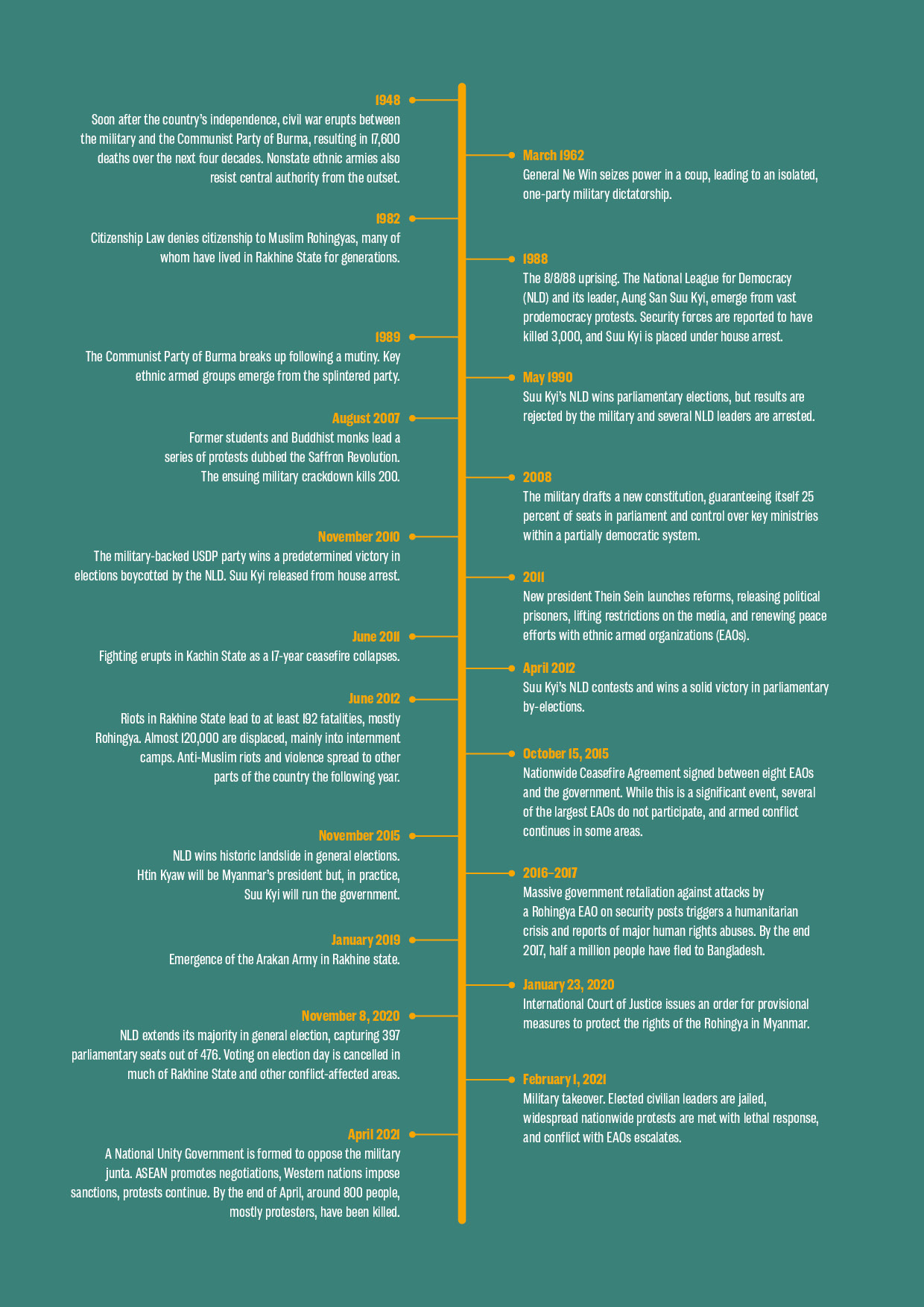The State of Conflict and Violence in Asia 2021
Myanmar

Overview
Following a second landslide victory by the National League for Democracy (NLD) in the general election of November 2020, Myanmar’s military alleged widespread voter fraud without producing convincing evidence. On February 1, 2021, the day the newly elected parliament was to convene, Myanmar awoke to news that the military had retaken control of all government and administrative institutions and detained NLD leadership and parliamentarians.
Widespread protests and civil disobedience soon followed, despite the imposition of a strict curfew. Security forces began to crack down on demonstrations, using increasingly violent tactics. General strikes pushed the national economy to the brink of collapse, generating severe risks of food insecurity and mass poverty across a population already affected by the Covid-19 pandemic. Internet access was severely restricted across the entire country, disproportionately affecting rural and poorer populations.
Aung San Suu Kyi had remained head of the ruling NLD since 2015, when the party won the first free elections in many decades. National political institutions were broadly stable over this period, and the country progressed on many fronts after decades of absolute military control. Yet key reforms to strengthen the foundations of democratic governance, including constitutional amendments, did not make headway, and the military easily reestablished its control in February 2021, either ending or pausing Myanmar’s decade-long experiment with democracy.
During that decade, the main formal peace process achieved little beyond the landmark 2015 Nationwide Ceasefire Agreement. Armed conflict continued, mainly in the areas with armed groups who did not sign the agreement, including Kachin State and northern Shan State near the Chinese border. In the west, Rakhine State also experienced upheaval after the Arakan Army emerged as a prominent and expanding armed group confronting the central government. A huge spike in battle deaths occurred in 2019 and continued in 2020, involving civilian casualties and leading to displacement across large areas of the state. In Kachin State alone, more than 97,000 remained displaced. Responses to the political turmoil of February 2021 differed among Ethnic Armed Organizations (EAOs), with a dramatic increase in clashes in Kachin and Kayin States reflecting both preexisting conflict trends and new protests among ethnic minorities.
Meanwhile, over 700,000 recent Rohingya refugees remain in Bangladesh. International pressure has grown to seek accountability for those who committed human rights violations in Rakhine during 2016 and 2017. Religious and ethnic divides worsened across the country as the government had limited success in curbing the spread of narratives targeting Muslims and other ethnic and religious minorities. Radical Buddhist groups used social media to propagate fear and hatred. The Myanmar military has lent support to radical groups and remains unaccountable for crimes against ethnic minorities in Rakhine and other areas.